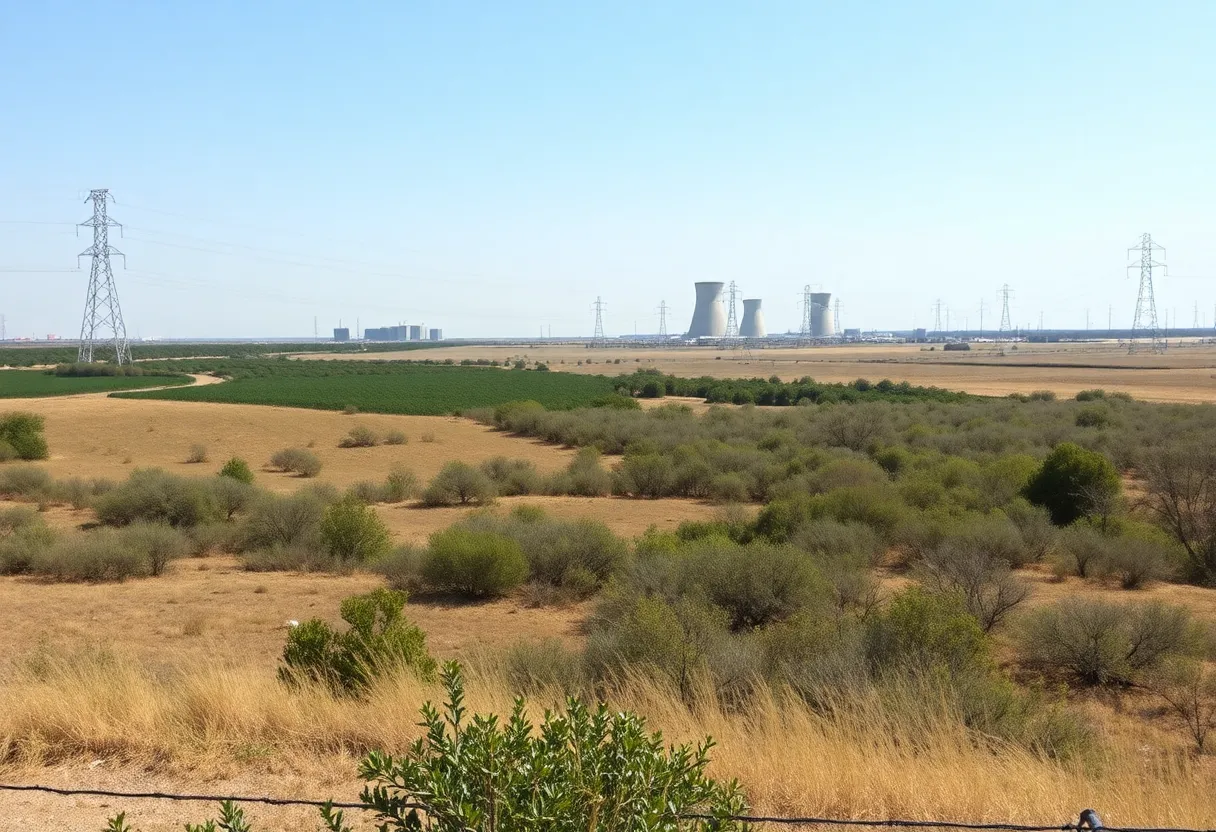Oklahoma City, October 21, 2025
Oklahoma regulators have initiated a comprehensive study on the potential for nuclear energy development in the state. This effort, supported by federal grants, aims to evaluate suitable sites for new nuclear power plants to meet growing energy demands. The initiative highlights safety and economic benefits, including the creation of approximately 5,000 jobs, while also fostering public engagement through community forums. Aiming for final recommendations next year, the study positions Oklahoma as a leader in sustainable energy solutions amidst increasing electricity needs.
Oklahoma City Advances Nuclear Energy Study with Federal Support
Oklahoma regulators have launched a detailed study to explore the potential for nuclear energy development across the state, prioritizing the evaluation of local sites for new power plants. This initiative, funded by federal grants, aims to address growing energy demands while emphasizing safety and economic advantages. The move comes as energy needs rise, positioning nuclear power as a reliable option amid broader transitions to cleaner sources.
The study focuses on assessing suitable state-owned or controlled sites that could host new nuclear facilities. Regulators plan to examine factors such as geological stability, water access, and proximity to existing infrastructure to determine feasibility. Safety protocols remain a core component, with evaluations designed to ensure compliance with stringent federal and state standards. Economic analyses will weigh the potential for job creation and cost savings for consumers against initial investment hurdles.
Proponents of the study highlight its potential to generate around 5,000 jobs during construction and operation phases, boosting local economies in rural and urban areas alike. Additionally, expanding nuclear capacity could help lower utility bills over time by providing a stable, low-carbon energy supply that reduces reliance on fluctuating fossil fuel markets. As electricity demand increases due to population growth, electric vehicle adoption, and industrial expansion, this study seeks to position Oklahoma as a leader in sustainable energy solutions.
Public Engagement and Timeline
To ensure community input shapes the outcomes, regulators will host a series of public forums throughout the state. These gatherings will allow stakeholders, including residents, environmental groups, and industry experts, to voice concerns and offer insights on proposed sites and broader implications. The forums are scheduled to begin in the coming months, with detailed agendas to be announced soon.
The overall timeline targets final recommendations by next year, following comprehensive data collection and analysis. Interim reports may provide updates on early findings, particularly regarding site suitability and preliminary economic models. This structured approach underscores the regulators’ commitment to transparency and thorough vetting before any development decisions are made.
Background on Oklahoma’s Energy Landscape
Oklahoma’s energy sector has long been dominated by natural gas and wind power, which together supply the majority of the state’s electricity. However, with an aging grid and increasing pressure to meet environmental goals, interest in nuclear energy has gained traction. The last nuclear plant in Oklahoma, located near Inola, has been operational since the 1970s but represents a small fraction of the state’s power generation.
Federal grants supporting this study stem from national efforts to revitalize nuclear energy as part of a diverse energy portfolio. These funds enable in-depth research without immediate state budget strains, allowing for unbiased assessments. The initiative aligns with broader U.S. trends where states are exploring nuclear restarts or new builds to achieve net-zero emissions targets by mid-century.
Challenges ahead include navigating regulatory approvals, addressing public skepticism about nuclear safety—particularly after historical incidents elsewhere—and securing long-term waste storage solutions. Despite these, the potential for nuclear to provide baseload power, operating continuously unlike intermittent renewables, makes it an attractive complement to Oklahoma’s existing resources.
Implications for Businesses and Residents
For businesses, the study could open doors to new opportunities in manufacturing, engineering, and supply chains tied to nuclear projects. Residents might see indirect benefits through stabilized energy prices and enhanced grid reliability, crucial for everything from home heating to data centers. As the study progresses, it will likely influence policy discussions on energy incentives and infrastructure investments.
This development reflects a pragmatic step toward energy independence, balancing innovation with caution. By focusing on state-specific sites, Oklahoma aims to tailor nuclear growth to its unique geography and needs, fostering discussions that could redefine the state’s role in the national energy conversation.
FAQ
What is the focus of the nuclear energy study in Oklahoma?
The study evaluates safety and economic benefits of nuclear energy amid rising energy demands, prioritizing state sites for new plants.
How is the nuclear energy study funded?
The initiative is backed by federal grants.
What economic benefits does the study project?
Proponents argue it could create 5,000 jobs and lower utility costs.
How will public input be gathered for the study?
Public forums will gather input from stakeholders before final recommendations next year.
Key Features of Oklahoma’s Nuclear Energy Study
| Feature | Description |
|---|---|
| Funding Source | Federal grants supporting comprehensive evaluation |
| Primary Focus | State sites for new nuclear plants, safety, and economic benefits |
| Projected Jobs | 5,000 jobs from construction and operations |
| Timeline | Final recommendations next year following public forums |
| Energy Context | Addresses rising demands with low-carbon, reliable power |





